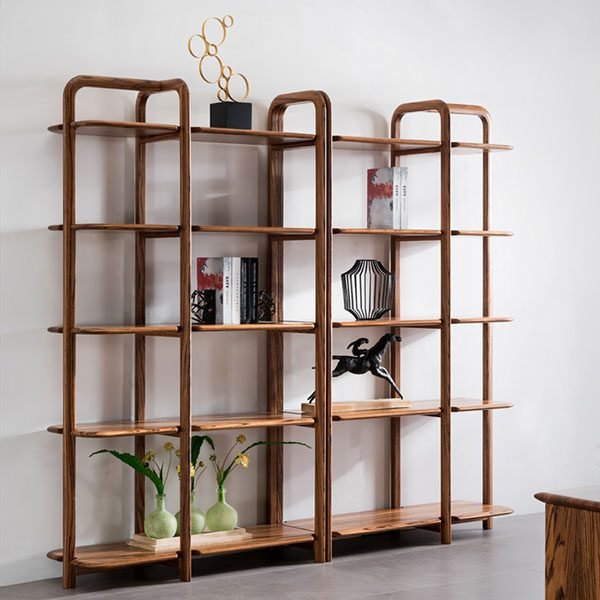“Securely wrapped, stress-free move!”
Essential Supplies for Wrapping Furniture for Moving
When it comes to moving furniture, one of the most important tasks is to ensure that it is properly wrapped and protected. This not only prevents damage during transportation but also makes it easier to handle and stack. In this article, we will discuss the essential supplies you need for wrapping furniture for moving.
First and foremost, you will need furniture blankets or moving pads. These thick, padded blankets are designed to protect your furniture from scratches, dents, and other damages. They are typically made of durable materials such as cotton or polyester and come in various sizes. Make sure to choose blankets that are large enough to cover your furniture completely.
Next, you will need stretch wrap or plastic wrap. This transparent plastic film is used to secure the furniture blankets in place. It provides an extra layer of protection and prevents the blankets from slipping or coming off during transportation. Stretch wrap is easy to use and can be wrapped tightly around the furniture using a dispenser or by hand.
In addition to furniture blankets and stretch wrap, you will also need packing tape. This strong adhesive tape is used to secure the edges of the furniture blankets and stretch wrap. It ensures that everything stays in place and provides added reinforcement. Make sure to choose a high-quality packing tape that is durable and resistant to tearing.
Another essential supply for wrapping furniture is bubble wrap. This lightweight plastic material is perfect for protecting delicate or fragile items such as glass tabletops or mirrors. It provides cushioning and absorbs shocks during transportation. Wrap the bubble wrap around the fragile areas of the furniture and secure it with packing tape.
Additionally, you may need furniture covers or plastic mattress bags for specific items such as sofas, mattresses, or chairs. These covers are designed to protect your furniture from dust, dirt, and moisture. They are usually made of thick plastic or polyethylene and can be easily slipped over the furniture. Make sure to choose covers that are the right size for your furniture.
Lastly, don’t forget about furniture straps or tie-downs. These strong straps are used to secure the furniture in place inside the moving truck. They prevent shifting or sliding during transportation and ensure that your furniture arrives at its destination safely. Make sure to choose straps that are adjustable and have a high weight capacity.
In conclusion, wrapping furniture properly is essential when moving. By using the right supplies such as furniture blankets, stretch wrap, packing tape, bubble wrap, furniture covers, and furniture straps, you can ensure that your furniture is well-protected during transportation. Remember to choose high-quality supplies and use them correctly to prevent any damage. With these essential supplies, you can have peace of mind knowing that your furniture will arrive at its new location in the same condition as when it was packed.
Step-by-Step Guide: How to Wrap Furniture for a Safe Move
Moving can be a stressful and overwhelming experience, especially when it comes to protecting your furniture during the process. Properly wrapping your furniture is essential to ensure its safety and prevent any damage during transportation. In this step-by-step guide, we will walk you through the process of wrapping furniture for a safe move.
1. Gather the necessary supplies: Before you start wrapping your furniture, make sure you have all the necessary supplies. You will need moving blankets, bubble wrap, packing tape, plastic wrap, and furniture pads. These materials will provide the necessary protection for your furniture during the move.
2. Disassemble if possible: If your furniture can be disassembled, it is recommended to do so before wrapping. This will make it easier to wrap each piece individually and provide better protection. Keep all the screws and small parts in a labeled bag to avoid losing them during the move.
3. Clean and prepare the furniture: Before wrapping, make sure to clean and prepare your furniture. Dust and dirt can cause scratches and damage during transportation. Use a soft cloth or a vacuum cleaner to remove any dirt or debris from the surface of your furniture.
4. Start with bubble wrap: Begin by wrapping delicate and fragile items, such as glass tabletops or mirrors, with bubble wrap. This will provide an extra layer of protection against any potential impact or breakage. Secure the bubble wrap with packing tape to keep it in place.
5. Use moving blankets: Moving blankets are thick and durable, providing excellent protection for your furniture. Start by covering the larger pieces of furniture with moving blankets. Wrap the blankets tightly around the furniture and secure them with packing tape. Pay special attention to the corners and edges, as they are more prone to damage.
6. Secure with plastic wrap: After covering your furniture with moving blankets, use plastic wrap to secure everything in place. Plastic wrap will prevent the blankets from shifting during transportation and provide an additional layer of protection against dust and moisture. Wrap the furniture tightly with the plastic wrap, making sure to cover all sides.
7. Add furniture pads: For extra protection, consider adding furniture pads to the corners and edges of your furniture. These pads will absorb any impact and prevent scratches or dents. Secure the pads with packing tape to ensure they stay in place during the move.
8. Label and organize: As you wrap each piece of furniture, make sure to label them accordingly. This will help you stay organized during the unpacking process and ensure that each item is placed in the right room. Use a permanent marker to label the wrapped furniture with its corresponding room or contents.
9. Load with care: When loading your wrapped furniture onto the moving truck, be mindful of its placement. Place heavier items at the bottom and lighter items on top to prevent any crushing or damage. Use straps or ropes to secure the furniture in place and prevent it from shifting during transportation.
10. Unwrap with caution: Once you arrive at your new location, take your time to unwrap the furniture with caution. Remove the plastic wrap, moving blankets, and any other protective materials carefully to avoid any damage. Inspect each piece for any signs of damage before placing it in its designated spot.
By following these step-by-step instructions, you can ensure that your furniture is properly wrapped and protected during the moving process. Taking the time to wrap your furniture correctly will give you peace of mind and help ensure a safe and successful move.
Tips and Tricks for Efficiently Wrapping Furniture for Moving
Moving can be a stressful and overwhelming experience, especially when it comes to packing and protecting your furniture. Properly wrapping your furniture is essential to ensure that it arrives at your new home in the same condition it left. In this article, we will provide you with some tips and tricks for efficiently wrapping furniture for moving.
First and foremost, it is important to gather all the necessary supplies before you start wrapping your furniture. You will need moving blankets, bubble wrap, packing tape, plastic wrap, and furniture pads. These supplies will help protect your furniture from scratches, dents, and other damages during the moving process.
Before you start wrapping your furniture, make sure to clean it thoroughly. Dust and dirt can cause scratches and damage to your furniture during transportation. Use a soft cloth or a vacuum cleaner to remove any dirt or debris from the surface of your furniture.
Once your furniture is clean, start by wrapping it with moving blankets. Moving blankets provide an extra layer of protection and help prevent any scratches or dents. Secure the moving blankets with packing tape to ensure they stay in place during the move.
For fragile or delicate furniture, such as glass tables or mirrors, it is recommended to use bubble wrap. Wrap the fragile items with several layers of bubble wrap to provide maximum protection. Secure the bubble wrap with packing tape to keep it in place.
To protect the corners and edges of your furniture, use furniture pads. Furniture pads are thick, cushioned pads that can be easily wrapped around the corners and edges of your furniture. They provide extra protection against bumps and impacts during transportation.
For furniture with drawers or doors, it is important to secure them properly. Use plastic wrap to wrap the drawers or doors tightly to prevent them from opening during the move. This will also help protect the contents of the drawers from falling out.
When wrapping larger furniture pieces, such as sofas or mattresses, it is recommended to use plastic wrap. Plastic wrap is a stretchy and durable material that can be easily wrapped around furniture. It provides protection against dust, dirt, and moisture during transportation.
As you wrap your furniture, make sure to label each piece. Use a permanent marker to write the contents and the room where the furniture belongs. This will make unpacking much easier and more organized.
In conclusion, wrapping your furniture properly is crucial for a successful and stress-free move. By following these tips and tricks, you can ensure that your furniture arrives at your new home in the same condition it left. Remember to gather all the necessary supplies, clean your furniture before wrapping, and use moving blankets, bubble wrap, packing tape, plastic wrap, and furniture pads for maximum protection. Don’t forget to label each piece to make unpacking easier. Happy moving!
Заключение
Заключение: Чтобы правильно упаковать мебель для переезда, следует выполнить следующие шаги:
1. Подготовьте необходимые материалы, такие как пузырчатая пленка, пленка для упаковки, скотч, пакеты для мебели и защитные уголки.
2. Очистите мебель от пыли и грязи перед упаковкой.
3. Защитите углы и острые края мебели, используя защитные уголки или пенопластовые заглушки.
4. Оберните мебель в пузырчатую пленку, чтобы предотвратить повреждения от ударов и царапин.
5. Затем оберните мебель в пленку для упаковки, чтобы зафиксировать пузырчатую пленку и обеспечить дополнительную защиту.
6. Закрепите пленку скотчем, чтобы она не соскользнула во время перевозки.
7. Если мебель имеет съемные части, такие как ножки или подлокотники, отсоедините их и упакуйте отдельно.
8. Пометьте каждую упакованную часть мебели ярлыками или наклейками с указанием ее содержимого и места назначения.
9. При загрузке мебели в грузовик расположите ее таким образом, чтобы она была устойчивой и не могла сдвинуться во время перевозки.
10. При разгрузке мебели аккуратно распакуйте ее, удалив пленку и защитные материалы.
Соблюдение этих шагов поможет защитить мебель от повреждений и сохранить ее в хорошем состоянии во время переезда.



